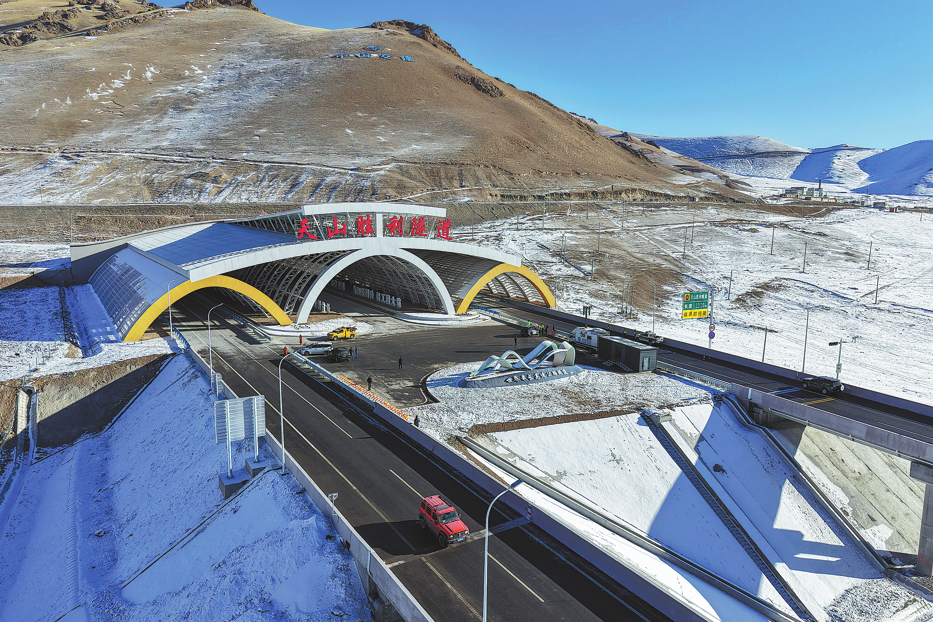China's planning conducive to growth


Planning plays a key role in China's economic development. China's economic planning combines economic data and projections with Chinese wisdom and intuition along with knowledge of society and the dreams and aspirations of the people, and demonstrates the methodological capacity to process immediate realities and infer from them the trends for the future.
For example, when China entered the era of "new normal"-of relatively low but steady higher-quality growth-many experts claimed China was facing a crisis. What these experts did not know is that the lower GDP growth rate was already part of a plan previously ratified by the country's top leadership.
Way back in 2012, some economists had forecast that China's GDP growth between 2020 and 2025 will be 5.7 percent or a little more. And in 2020 China made the 14th Five-Year Plan (2021-25) for National Economic and Social Development and Long-Range Objectives Through the Year 2035.
In some Latin American countries' national and regional planning, there are flaws. For example, the gap between ideas and practices in Latin America is at times very wide.
China has said the axes of its development are based on three large regions-the Yangtze River Delta region, the Beijing-Tianjin-Hebei region and the Guangdong-Hong Kong-Macao Greater Bay Area (which includes the Pearl River Delta region centered on Shenzhen).
But given that development requires consumption of energy and other natural resources, it is necessary to analyze the impacts national and regional development plans will have on the environment, and generate more renewable energy in order to reduce carbon emissions and better protect the environment.
Knowing where you are and where you want to go are the most important aspects of planning and implementation. Look at China's 2010 planning for the freight railway link with Europe to realize that the cities of origin (Chongqing and Chengdu in China), the main cities along the route and the detailed route had been clearly identified out and their development path explained in detail.
This incidentally is also the main feature of the Belt and Road Initiative.
As for the China-Europe freight railway, with the departure of a train from Chengdu, Sichuan province, to Nuremberg, Germany, in January, the China-Europe railway service crossed 50,000 trips, according to the China State Railway Group.
In Latin America, especially in South American countries, there is no lack of imagination when it comes to projects; in fact, they are similar to those in China. Some detailed plans, too, are drawn up, but their execution remains entangled in bureaucracies, heterogeneity of local interests and the inability to carry out true regional integration.
History shows that since 1930, several proposals have been made to unite the basins of the Amazon, Rio de la Plata and Orinoco rivers, because it would make travel faster and more convenient. Surprisingly, for many, it would also connect Buenos Aires with Sao Paulo through waterways.
To do that, however, it is necessary to build a lock on the Itaipu Dam on the Brazil-Paraguay border, collect the water in a basin which would link the two river systems-the Paraguay-Paraná rivers on the Paraguayan side and the Tieté-Paraná rivers on the Brazilian side-at the border with Argentina. And from there, one can enter a dense network of rivers and their tributaries, travel through the Orinoco River and end up in the Caribbean Sea.
It would be pertinent to also mention the Initiative for Integration of Regional Infrastructure in South America, an infrastructure network designed in 2000 to build highways and energy and communications interconnection infrastructure. But its progress remains limited and confined to local areas.
On the other hand, the coordination we see among planning and execution of projects in China is exemplary. For instance, two weeks after China unveiled the guidelines for the Yangtze River Delta region's development over the next five years (that is till 2025), the country's leaders laid out relatively specific plans and targets for the Yangtze River Economic Belt.
President Xi Jinping presided the meeting to discuss the importance of the region in China's overall development and its links with the outside world. Official data show the region covers about one-fifth of China's land, has a population of 600 million and generates more than 40 percent of the country's GDP. So the Yangtze River Economic Belt's development, the leaders said, must be consistent with the new development strategy and lay emphasis on higher-quality growth, so it can become a role model for green growth, regional coordination, further opening-up and self-innovation.
Given the uncertainties the world faces today, joint planning between Latin American countries and China, on the pledge of advancing on the path of peace and cooperation, will be very important for Latin America's development. Of course, there is the China-CELAC Joint Action Plan for cooperation in key areas (2022-24). The plan has huge potential, but to realize that, we have to convert the plan into reality by rising above narrow national and political interests, and moving toward common destiny. To that end, the Chinese way of planning and practices can be a determining factor.
The views don't necessarily reflect those of China Daily.
The author, a former ambassador to China, is the director of the Center for China Studies, Andres Bello University, Santiago, Chile.
If you have a specific expertise, or would like to share your thought about our stories, then send us your writings at opinion@chinadaily.com.cn, and comment@chinadaily.com.cn.


































